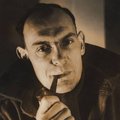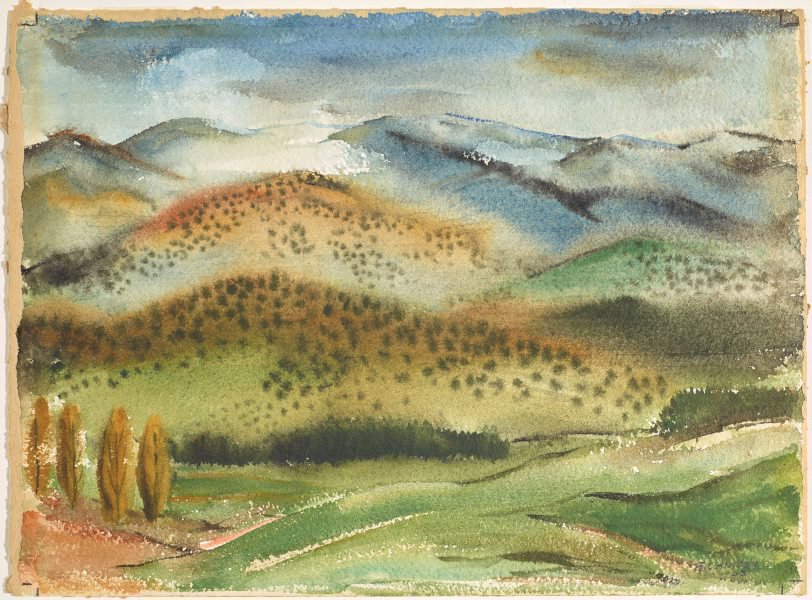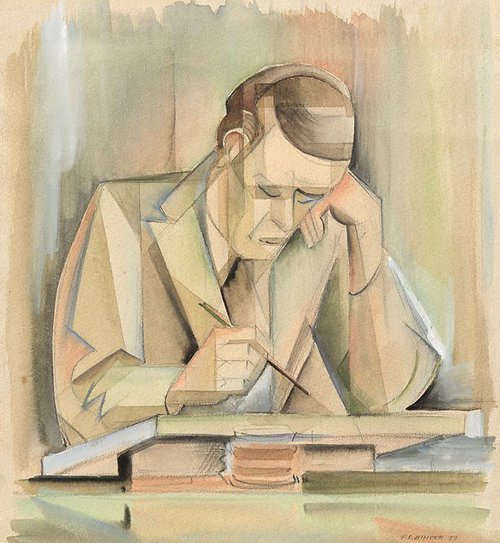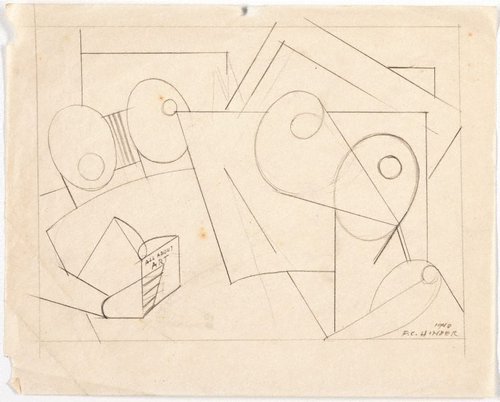-
Details
- Date
- 1943
- Media category
- Watercolour
- Materials used
- watercolour and gouache on paper
- Dimensions
- 23.0 x 30.4 cm sight/sheet; 32.4 x 40.0 cm frame
- Signature & date
Signed and dated l.r. corner, pencil "F.C.HINDER / 43".
- Credit
- Gift of Professor Peter Read 2018. Donated through the Australian Government's Cultural Gifts Program
- Location
- Not on display
- Accession number
- 134.2018
- Copyright
- © Estate of Frank Hinder
- Artist information
-
 Frank Hinder
Frank Hinder
Works in the collection
- Share
-
-
About
Frank Hinder’s legacy to Australian art is a body of prints, drawings and paintings that depict the dynamic rush of modern urban life. His work is remarkable for its rhythmic harmony, lyrical colour and sophistication of design. A founding member of the Contemporary Art Society, Sydney, he was one of a small group of artists crusading for abstraction in Sydney during the 1930s. He had a strong interest in cubist and constructivist principles and theories of dynamic symmetry.
Hinder studied at the Art Institute of Chicago and the New York School of Fine and Applied Art (later known as Parsons). He returned to Australia in 1934 with his new wife, American sculptor Margel. In Sydney, they started a commercial art business and soon joined Grace Crowley and Rah Fizelle’s progressive Art School in George Street, bringing their knowledge of European and American abstraction to the group.
Hinder’s talent in abstract art was put to practical use during the Second World War when he was employed by the Department of Home Security as a camouflage artist along with fellow artist Max Dupain. During the war, artists were recruited to assist with camouflage as they had the facility to turn their knowledge of Abstraction towards concealment and deception. Hinder utilised colour, shadow and shape to create designs that could be applied to disguise vehicles, helmets and uniforms. He undertook this wartime project by closely relating it to his artistic practice, later explaining: 'My work in camouflage during the war was connected with light, colour, tone, shadows, optical effects and illusions and so on – all for a very different purpose but nevertheless related to problems which concern the artist.’ While in Canberra developing and testing camouflage techniques, Hinder produced a series of watercolour landscapes of Canberra and surrounds. This serene landscape depicts the rolling hills surrounding Canberra, possibly near the Mt Stromlo Observatory that was also a hub for wartime maunfacturing, serving as an optical munitions factory producing gun sights during the war.




